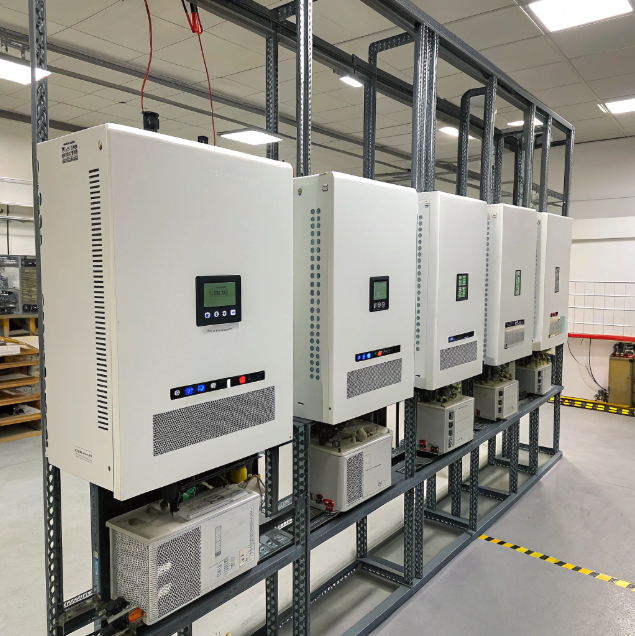Is Your Inverter Silently Killing Your Batteries? The Charging Algorithm Mistake Most Manufacturers Make
by
Is Your Inverter Silently Killing Your Batteries? The Charging Algorithm Mistake Most Manufacturers Make
Your inverter's software could be prematurely aging your battery bank right now. Many systems suffer from outdated charging algorithms[^1] that reduce lifespan.
Most inverters use simplistic charging algorithms that overcharge and undercharge batteries, causing sulfation and capacity loss. Advanced multi-stage charging with temperature compensation extends battery life significantly.
While many focus on inverter specs and pricing, the real cost lies in hidden battery degradation[^2]. Let's explore the critical factors that impact your system's true value and performance.
The "Grid Code Gotcha": One Line in a Utility Spec That Can Make Your Inverter Useless (And How to Spot It)
Imagine installing a perfect solar system only to discover it can't connect to the grid. Many inverters fail utility compliance checks due to obscure grid code requirements.
Utility grid codes specify voltage and frequency ride-through[^3] requirements that many inverters can't meet. Always verify your inverter's certification matches your local utility's specific requirements before purchase.
Understanding Grid Code Compliance
Grid codes are technical specifications that ensure safe and stable operation when connecting distributed generation to the utility grid. The most common compliance issues involve:
Voltage and Frequency Ride-Through Requirements
- Voltage dip ride-through (typically must operate through 15-20% voltage drops)
- Frequency variation tolerance (usually ±2 Hz from nominal frequency)
- Anti-islanding protection (must detect grid failure within 2 seconds)
| Common Compliance Pitfalls: | Issue Type | Impact | How to Verify |
|---|---|---|---|
| UL 1741 SA vs Non-SA | SA version required for most modern grid connections | Check model suffix for "SA" designation | |
| Regional Variations | California Rule 21 vs Hawaii Rule 14H, etc. | Request utility-specific certification documents | |
| Firmware Updates | Some require latest firmware for compliance | Verify current firmware version matches certified version |
Always request the manufacturer's Certificate of Compliance for your specific utility region. Many installers discover compliance issues only during utility inspection, causing costly delays and system redesigns.
Beyond Price Per Watt: The FREE Calculator to Find the TRUE Cost of an Inverter (Labor + Support + Lost Generation)
The sticker price hides the real costs. Installation complexity, support quality, and downtime losses often exceed the hardware cost.
True inverter cost includes installation labor, maintenance, support responsiveness, and generation losses during downtime. A free calculator weighs these factors against upfront price.
Calculating Total Cost of Ownership
The true cost of an inverter extends far beyond the purchase price. Consider these often-overlooked factors:
Installation Complexity Factors
- Wiring and connection requirements
- Mounting and physical installation time
- Commissioning and configuration complexity
| Operational Cost Components | Cost Category | Impact Range | Considerations |
|---|---|---|---|
| Installation Labor | 15-40% of hardware cost | Simple plug-and-play vs complex wiring | |
| Support & Maintenance | 5-15% annually | Warranty coverage and response time | |
| Lost Generation | $2-10/day during downtime | Repair turnaround time and availability | |
| Compatibility Costs | Variable | Additional components needed for full functionality |
Use our free online calculator that factors in your local labor rates, typical downtime periods, and energy costs to compare different inverter models' true 10-year costs. Many "budget" inverters end up costing more due to frequent service calls and complex installations.
For OEM Partners: The "White-Label" Inverter Platform That Feels Custom-Built (Without the Custom-Built Price Tag)
Building custom inverters from scratch costs millions and takes years. Modern white-label platforms offer brand customization with proven reliability.
Advanced white-label inverter platforms[^4] provide OEM customization of firmware, housings, and branding while leveraging proven hardware platforms and certification testing.
White-Label Platform Advantages
For manufacturers and installers looking to build their own branded solutions, white-label platforms offer significant advantages:
Cost and Time Savings
- 60-80% reduction in development costs
- 12-18 month faster time to market
- Pre-certified for major markets (UL, CE, etc.)
| Customization Options Available | Customization Area | Typical Options | Impact on Timeline |
|---|---|---|---|
| Branding & Enclosure | Full cosmetic customization | +2-4 weeks | |
| Firmware Customization | Algorithm tuning, interface branding | +4-8 weeks | |
| Connectivity Options | WiFi, cellular, proprietary protocols | +8-12 weeks | |
| Special Features | Grid support functions, unique monitoring | +12-16 weeks |
These platforms leverage proven hardware designs while allowing partners to differentiate through software, user experience, and specific feature sets. The best platforms provide API access for deep integration with existing energy management systems.
Conclusion
Choose inverters based on total cost of ownership, compliance verification, and platform flexibility rather than just upfront price. Smart selection prevents hidden costs and ensures long-term reliability.
[^1]: Explore advanced charging algorithms to enhance battery lifespan and performance.
[^2]: Understanding battery degradation can help you make informed decisions about your inverter system.
[^3]: Discover the importance of these requirements for safe inverter operation.
[^4]: Discover how white-label platforms can save costs and time for manufacturers.
Popular Posts
You may also be interested in:




